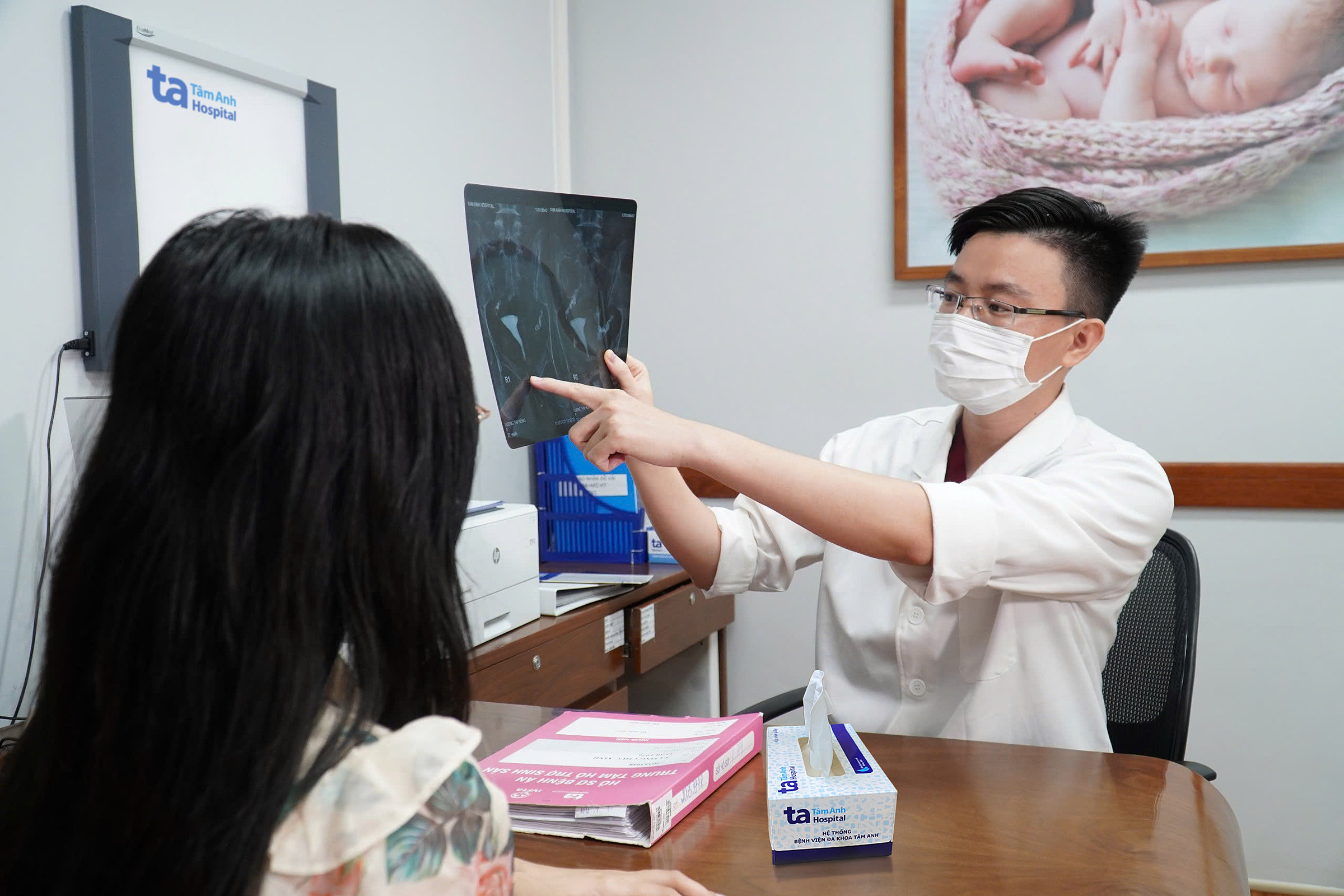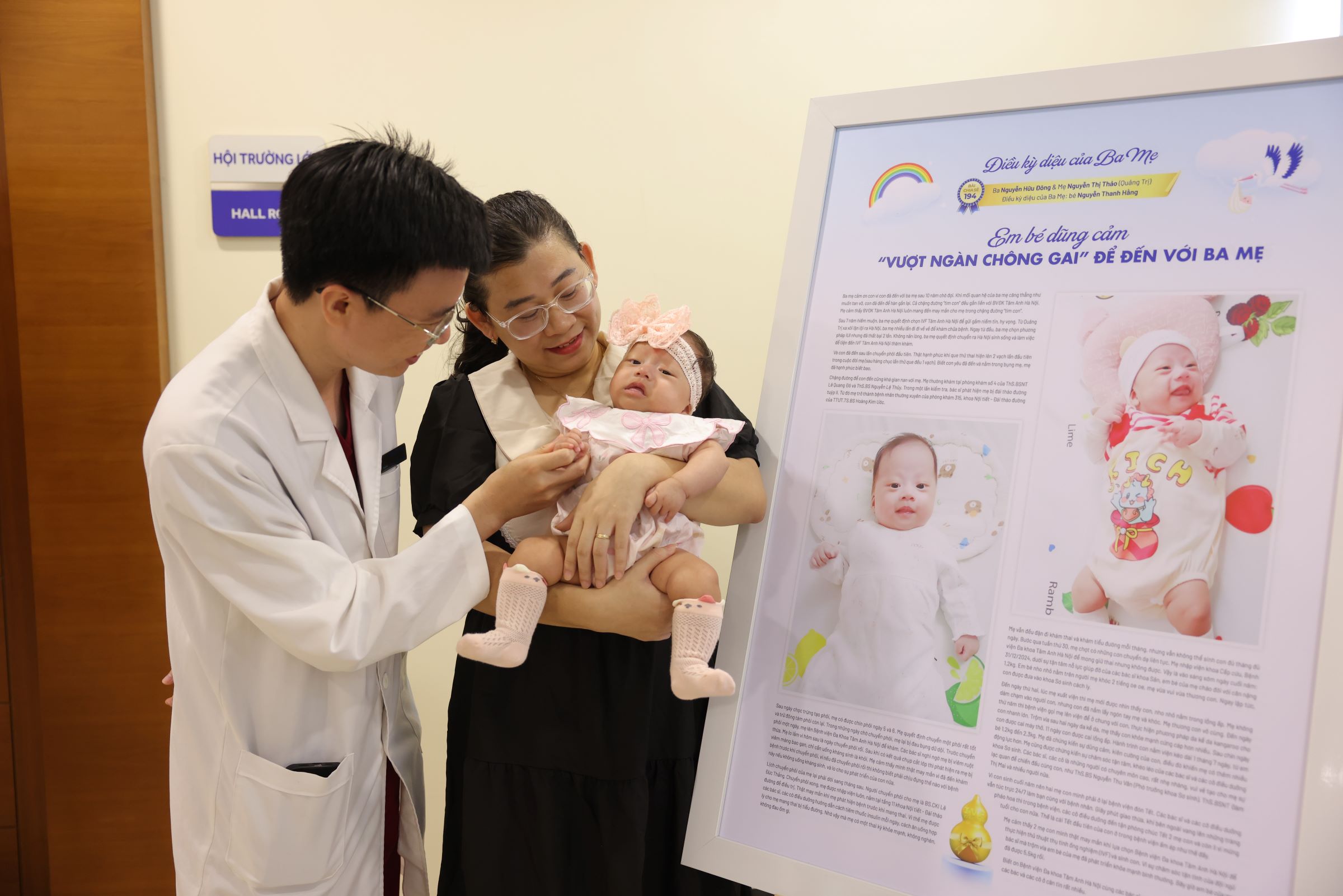Doctor Le Duc Thang from the Center for Reproductive Assistance at Tam Anh General Hospital in Hanoi (IVF Tam Anh) explains that uterine polyps are benign tumors that form when the uterine lining grows excessively. They are common in women of reproductive age and those approaching menopause. "They account for approximately 15-35% of infertility cases," Dr. Thang says. At IVF Tam Anh, about 20% of female patients are treated for this condition.
Uterine polyps can obstruct the movement of sperm, distort the uterine cavity, and make it difficult for embryos to implant and develop. Large polyps can occupy space in the uterus during pregnancy, potentially causing miscarriage or premature birth. Some types, especially those located in the cervix, can increase vaginal discharge, creating a favorable environment for harmful microorganisms. This can lead to gynecological conditions such as vaginitis, cervicitis, and vulvitis, affecting fertility and increasing the risk of pregnancy complications. If left untreated, polyps can also cause failed embryo transfers during in vitro fertilization (IVF).
Uterine polyps may not present any symptoms, or the most common symptom is irregular menstrual cycles. Small polyps are difficult to detect through routine examinations and require hysteroscopy combined with pathological examination. Consequently, many women experience infertility for years without a diagnosis.
One patient, 32-year-old Tra, had been married for 6 years without conceiving. A hysteroscopy at IVF Tam Anh revealed dense polyps completely blocking her cervix. Similarly, 35-year-old Thao, infertile for 7 years, was diagnosed with several uterine polyps, the largest measuring 3x5 mm, along with endometrial hyperplasia.
 |
Dr. Thang consulting a patient. Photo illustration: IVF Tam Anh |
Dr. Thang consulting a patient. Photo illustration: IVF Tam Anh
According to Dr. Thang, surgical removal of polyps increases the chances of pregnancy, treats or improves irregular menstruation and bleeding after intercourse, and prevents complications such as gynecological infections, polycystic ovary syndrome, cancer, miscarriage, or premature birth. The recurrence rate is around 15%, and natural pregnancy after intervention is not guaranteed. The probability of pregnancy increases by 30% with intrauterine insemination (IUI) and 65% with IVF.
Tra and her husband opted for polyp removal and IVF. Tra underwent ovarian stimulation, egg retrieval, and 3 embryos were created for cryopreservation. During hysteroscopic surgery to remove the polyps, tissue samples revealed chronic endometritis. After two months of antibiotic treatment, she received medication to prepare her uterine lining according to an individualized protocol. After a second embryo transfer, she successfully conceived. Following multiple hospitalizations for threatened miscarriage and premature labor, she delivered a healthy baby boy weighing 3.1 kg via C-section at 40 weeks.
Thao also underwent surgery to remove benign uterine polyps, followed by ovarian stimulation and two IUI attempts, which were unsuccessful. The couple then pursued IVF, resulting in 9 viable embryos. After preparing her uterine lining, a single embryo transfer led to a successful pregnancy. Thao went into premature labor at 30 weeks, giving birth to a baby girl weighing 1.2 kg, who received specialized care in the neonatal intensive care unit. After over a month, the baby was discharged, weighing 2.3 kg.
 |
Thao and her baby reunite with Dr. Thang at the Golden Pregnancy Day event organized by IVF Tam Anh. Photo: Hospital provided |
Thao and her baby reunite with Dr. Thang at the Golden Pregnancy Day event organized by IVF Tam Anh. Photo: Hospital provided
The uterus is a vital female reproductive organ, nourishing the fetus throughout pregnancy until birth. It is susceptible to damage that can reduce fertility.
Women with irregular menstruation, especially those with polycystic ovary syndrome or obesity, have a higher risk of uterine polyps due to elevated estrogen levels. Additionally, the use of fertility drugs for ovarian stimulation can increase estrogen, potentially accelerating the growth of the uterine lining and promoting the formation or enlargement of polyps.
Besides uterine polyps, other common uterine abnormalities include uterine malformations, endometriosis, uterine adhesions, endometritis, and poorly nourished endometrium. Dr. Thang advises that many uterine conditions have no obvious symptoms and progress silently, making them difficult to detect. Therefore, women who have been married for a year without conceiving (6 months for those over 35) should seek medical evaluation and treatment to improve their chances of conception.
Trinh Mai
| Readers can submit questions about infertility here for doctors to answer. |












